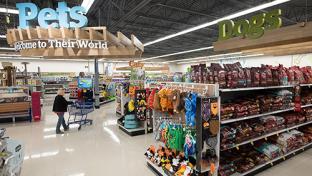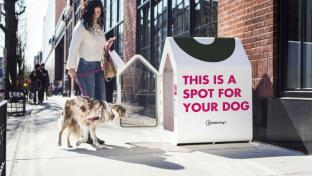Chewy Takes a Giant Bite of Pet Category
Food retailers wondering where their market share in the pet category went need wonder no longer, after Chewy reported stunning third-quarter sales growth.
Online pet supplies retailer Chewy continued to gobble market share during its third quarter, with sales advancing 40% to $1.23 billion. The company’s active customer count increased 32.8% to 12.7 million, and average sales per customer increased to $360 from $323. Those are impressive figures, but equally noteworthy, because it speaks to the stickiness of the Chewy platform, is the fact that 70.4% of third-quarter sales were auto-replenishment.
“We believe we are transforming the industry with our truly unique and personalized, high-bar shopping experience that builds trust and brand loyalty by keeping the customer at the center of everything we do,” said Sumit Singh, CEO of Dania Beach, Fla.-based Chewy.
From a merchandise standpoint, consumable products, which accounted for 74% of total sales, increased 34.1% to $910.8 million, while hardgoods grew 28.8% to $172 million. The fastest-growing category was “other,” a designation that includes a recently launched pet pharmacy, which grew 113.6% to $146.8 million.
Despite the top-ine growth, the eight-year-old company reported a net loss of $79 million, including a $39.3 million noncash share-based compensation charge. The newly public company is adding employees at a rapid pace and incentivizing them with stock grants. Chewy went public on June 18 at $22 a share following its May 2017 acquisition by privately held PetSmart, based in Phoenix.
Since then, Chewy has executed a dramatic ramp-up of its product assortment, including an increased emphasis on private label. As Singh explained on a call with investors, private brands are an important part of the company’s proposition to delight customers.
“Over the past year, we have grown our Chewy private-brands assortment by over 80%, a significant portion of which was in higher-margin hardgoods products,” Singh said. “As part of this process, we work backwards from customer needs and bring high-quality exceptional customer-rated products to life.”
In the third quarter, private-brand sales grew more than 60%, according to Singh.
“Our private-brands portfolio has the potential to contribute meaningfully over time and is yet another proof point against our strategy of delivering growth and incremental profitability,” he said.
Based on the momentum evident in the company’s third-quarter performance, it increased its full-year sales forecast to a range of $4.82 billion to $4.84 billion.







